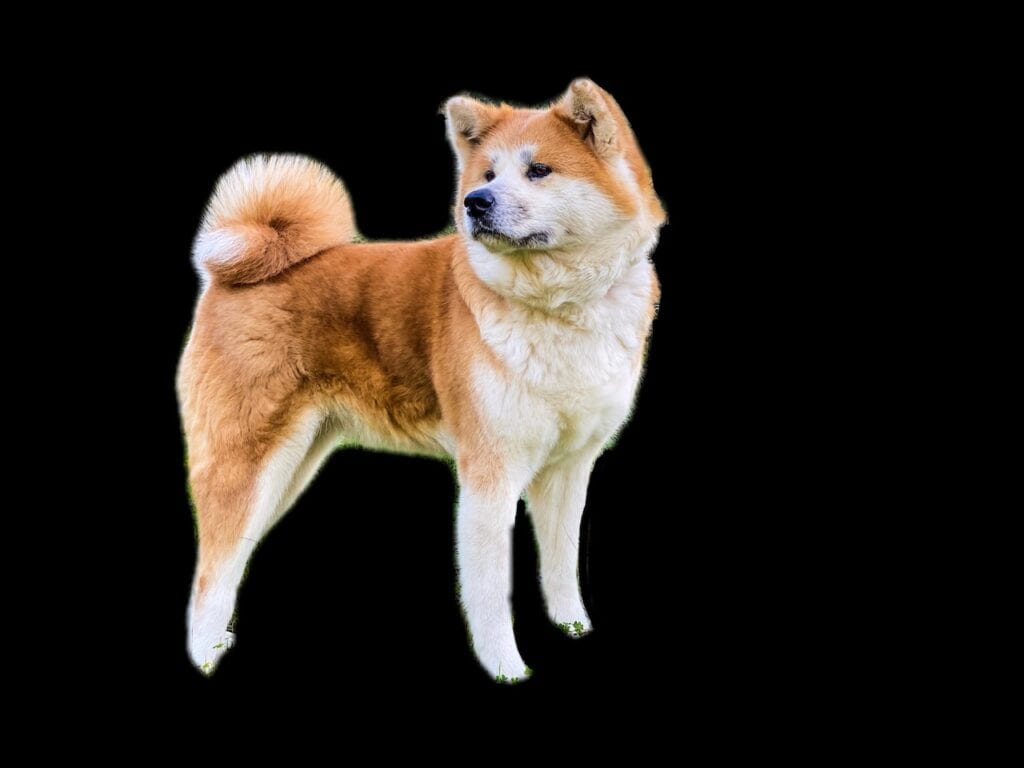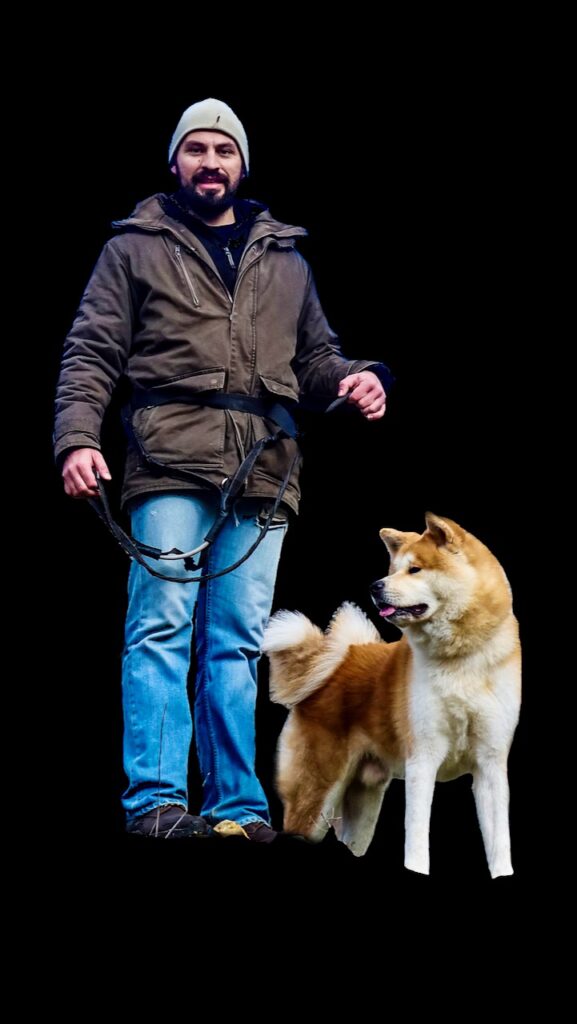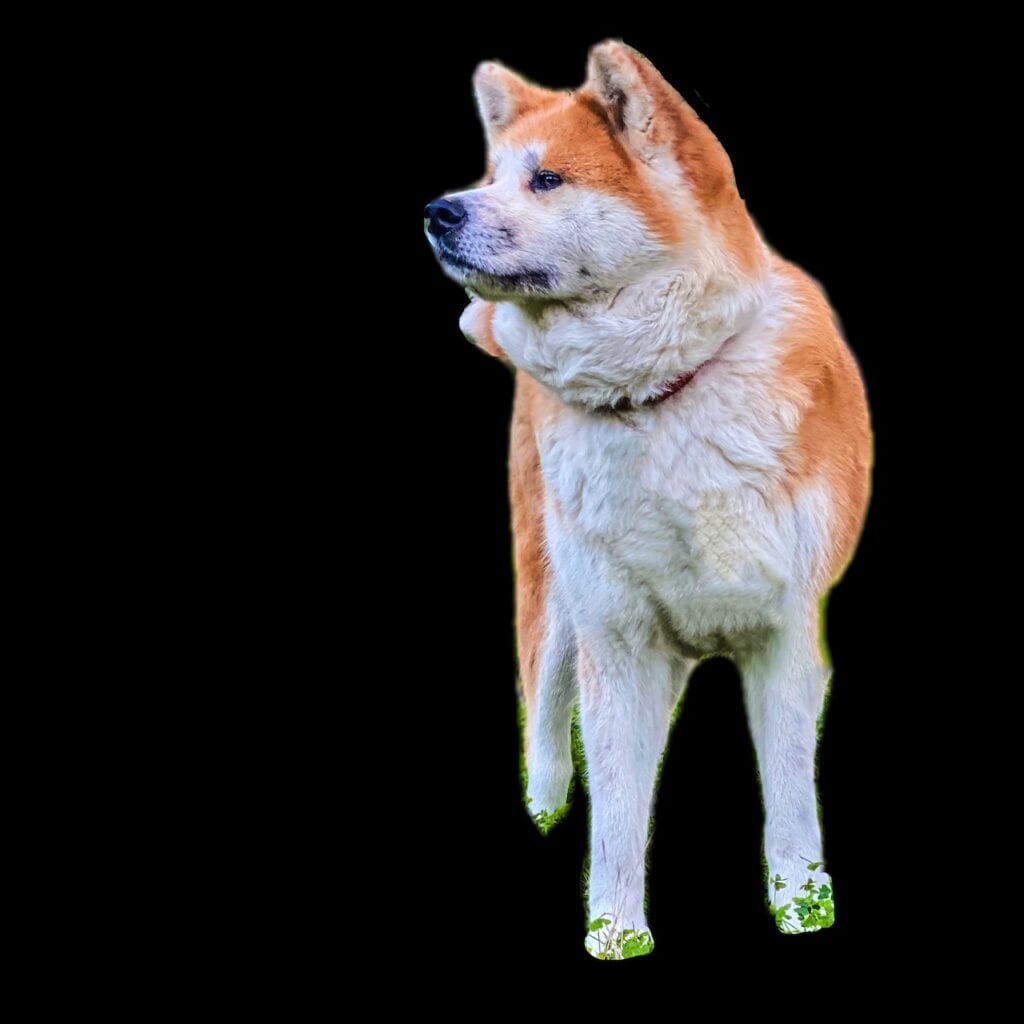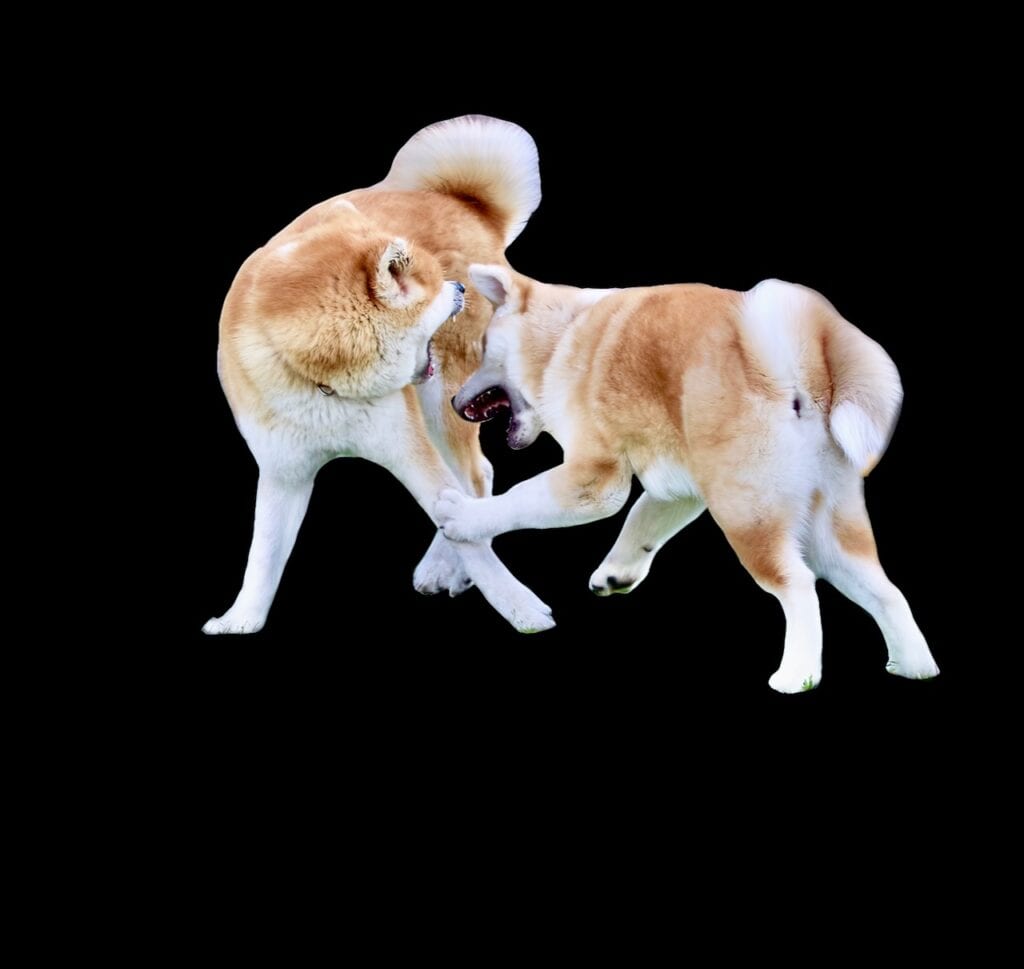The Akita Inu — Overview Of The Breed
The Akita Inu is the tamed wolf spirit of Japan. It became famous in the early 20th century, finding its way into hearts and homes of dog owners worldwide.
The Akita Inu breed is the tamed wolf spirit of Japan. It became famous in the early 20th century, finding its way into hearts and homes of dog owners worldwide.
The Akita Inu - 秋田犬 Tweet

Akita looks like a smiling teddy bear but the jolly exterior hides many secrets. This guarded guard dog breed hails from the Japan’s Akita prefecture. At first used for hunting, its forward poise and robust build made it a fixture in dog fights until a more noble purpose was found for it — guarding human homes and hearts.
Akita originally prowled the rural parts of Odate, a mountainous region in Japan. The ferocious beast drew strength from kinship with wolves to bury its fang and claw into boars, elks and even the small Yezo bear. They were hard to tame and rarely gave their trust to humans, which is why “Akita keeper” is an actual employable skill in Japan.
Each year, there are two national competitions held in Japan for the best Akita. Rated in over 70 categories, the best Akita must be docile, humble, keenly alert, benign and with an obedient spirit. Even if an Akita has all those attributes, a win isn’t guaranteed unless the dog has been specially trained and handled to behave. That’s why some of those shows employ those special Akita keepers.
In Japan, the Akita came to be associated with royalty and treated like one, with nobility using them as a status symbol. Today, the Akita is a national Japanese treasure, representing longevity, happiness and good health. Newborns are commonly gifted a statue of Akita to imbue their lives with all the benefits of the breed.
Hellen Keller was the first American to own an Akita outside of Japan; in fact, she owned two! She introduced them to the United States in the 1930s, quickly gaining popularity with dog owners. Today, Japan boasts a dedicated Akita museum found, where else, in the Odate region.
In dog classification, Akitas belong to the Asian Spitz group that involves one of 14 so-far known ancient strains that hails all the way back to a tiny subset of gray wolves inhabiting Asia 15,000 years ago.
Akita has a finely tuned fighting and hunting spirit. This makes it clash with strangers but also hunt down small, prey animals, such as mice, rabbits and birds. Keeping an Akita in a busy environment rich with easy targets is likely to cause a lot of commotion and conflicts. Those they do love, Akitas shower them with affection and adoration but they can be considered possessive and jealous of other pets.
Two Akitas of the same sex can be excessively aggressive towards one another, especially if left alone or unattended. Even when the owner is present, both Akitas will relentlessly charge, growl and snap at one another. This of course can happen when the Akita is left with any other dog breed. In both cases there are usually some warning signs.
Akita owners can be caught by surprise when their apparently docile dog suddenly snaps and goes feral at a moment’s notice. Since Akitas rarely bark, they won’t give much of a warning before they lunge. The perpetual smile on Akita’s face can throw off the owner, since they don’t announce their aggression or otherwise emote much.
Akitas will also ferociously guard their food bowl, especially at feeding time. Other pets and children beware — Akita was bred as a hunting and fighting dog for a reason. Struggling against these quirks can overwhelm and exhaust the hapless owner.
Training an Akita is a challenge, since they are intelligent, strong-willed dogs that get bored easily and should be trained exclusively by their owner. A prospective owner has to treat an Akita with respect, using rewards and praise to train the dog. In return, the Akita will show respect to the human and follow his lead. This approach creates a firm bond of respect that guarantees fine behavior.
Getting help from an experienced trainer to housebreak an Akita is an acceptable solution. The trainer should be correctly chosen and it is necessary and recommended that he has worked with this breed before, so that he understands and respects the peculiarities of the breed. The best training is when the owner and the Akita get trained together. In addition, each dog has a difference character, so it is important to further understand and adapt to your Akita’s character. Understanding what can trigger a behavior is essential which can later help you to act proactively and avoid some incidents. This can be done with the help of an experienced trainer.

Training should ideally socialize the Akita, helping curb its aggressiveness towards strangers and animals but also making it more malleable for the owner. This will help the owner present it in the public without using any special handling techniques.
Despite being a large breed, Akita doesn’t take hours of running exercise every day. It prefers brisk walks, particularly in cold weather, which includes plowing through fresh snow. A uniquely Akita trait is that they become more active as the temperature drops. Before the breed got its name, it was most often referred to as “snow country dog”. However, they can become pudgy due to lack of exercise.
Akitas inherit quirks but don’t exhibit them until adulthood. Getting an Akita from a reputable breeder will help you choose an Akita with the correct temperament. Reputable breeder will not only breed based on the physical appearance but also on the character and temperament. Rescuing an Akita from a rescue group or an animal shelter is also a choice. You also save an Akita’s life, so it is even more! However, as Akitas needs to be continually socialized and considering that many dogs in the shelters develop pack characteristics which means that they can get more aggressive etc., it is likely that you will have to spend more time working and training your rescued Akita. This depends on the shelter, what the Akita has experienced before, while being in the shelter and of course the character of the Akita. Nevertheless, at the end of the day the reward of saving a dog from the shelter is unparallel.
Training and raising an Akita is a challenge, seeing how they have a complex, layered temperament. Most Akitas, including the female ones, are dominant and independent, bowing only to a worthy owner. Despite each Akita having a distinct individuality, they are all vigilant guard dogs and intense cuddlers. However, they are most often too much of a hassle for the average dog owner.
Akitas have a strong body and a sturdy physique. When mature, Japanese Akita males are on average 25 inches (63cm) high at the withers and on average weigh 105lb (47kg). Mature females are 23 inches (58cm) and 80lb (36kg).
Curled-up tail, thick coat and a rugged appearance make Akita an instantly recognizable and admirable outdoor dog. Akita will naturally assume a noble, dignified posture, serving as a great deterrent against predators and threats but also providing a great photo opportunity.
As for the fur colors, the breed standards dictate Akita Inu is exclusively red, fawn, sesame, brindle, pure white. On the underside of jaw, neck, chest, body and tail, on the inside of legs, on the sides of the muzzle and on the cheeks, there should be Urajiro markings, which is a whitish coat.

Akitas shed completely two times a year, requiring quite a bit of house cleaning to collect the hair. They don’t tend to salivate and have a self-cleaning coat that lacks in odor, making them decent apartment dogs, as long as the owner can handle their shedding.
Akitas have a strong body and a sturdy physique. When mature, Japanese Akita males are on average 25 inches (63cm) high at the withers and on average weigh 105lb (47kg). Mature females are 23 inches (58cm) and 80lb (36kg).
Curled-up tail, thick coat and a rugged appearance make Akita an instantly recognizable and admirable outdoor dog. Akita will naturally assume a noble, dignified posture, serving as a great deterrent against predators and threats but also providing a great photo opportunity.
As for the fur colors, the breed standards dictate Akita Inu is exclusively red, fawn, sesame, brindle, pure white. On the underside of jaw, neck, chest, body and tail, on the inside of legs, on the sides of the muzzle and on the cheeks, there should be Urajiro markings, which is a whitish coat.
Akitas shed completely two times a year, requiring quite a bit of house cleaning to collect the hair. They don’t tend to salivate and have a self-cleaning coat that lacks in odor, making them decent apartment dogs, as long as the owner can handle their shedding.
Akitas will most often live up to 12 years. Anything beyond that is akin to humans living past 90 years of age. Their hereditary diseases become pronounced at advanced age, especially progressive retinal atrophy (blindness) and hip dysplasia. Vet visits should be scheduled every 6–12 months to detect and manage health issues.
Gastric dilatation and volvulus (GDV) can occur in Akitas due to bloat and gastric torsion. In other words, Akita’s stomach does not empty properly, leading to a gas buildup. This problem is very common in Akitas, with only Great Danes suffering from it more often. GDV occurs in three stages, with progressively worsening symptoms.
Additional 16% of all Akitas will die due to orthopedic health issues, such as hip dysplasia. X-rays performed on tens of thousands of Akitas showed they commonly have problems with elbows, ligament ruptures and inflammation of joints.
Finally, autoimmune diseases kill an estimated 7% of Akitas. Autoimmune diseases happen when a defective immune system attacks various parts of the body, causing persistent damage. If the skin is attacked, the symptom is most often lupus or vitiligo but can also be sebaceous adenitis, an inflammation of the sebaceous glands that lubricate the coat. If the immune system attacks the eyes, the most common result is VKH (Vogt-Koyanagi-Harada-like syndrome), an incurable disease of the eyes that causes unavoidable, permanent blindness.
Anemia is a common issue in Akitas with autoimmune problems but so is hypothyroidism, with studies showing 17% of Akitas develop sudden aggressiveness due to low thyroid levels. Endocrine system disruptions are a potential source of headaches, with diseases including Cushing’s disease, Addison’s disease and diabetes.
Allergic reactions can cause itching, excessive scratching and a bacterial skin infection. Eyes are a vulnerable part of Akitas as well, with a slew of degenerative diseases affecting Akitas, such as glaucoma. Finally, Akitas can suffer from myasthenia gravis, a degenerative disease of the muscles that makes the dog lose control of its body, and epilepsy, which causes fainting spells.
For almost all of these health issues, there is a therapy that can alleviate the symptoms but there’s no definitive cure. There’s no need to feel guilt or shame because they are almost all inherited and expressed through genes.
Hachiko is the most notable Akita, now referred to as “faithful dog Hachiko” in Japan. This golden brown dog was born in 1923 in the Japanese Odate region, adopted the next year by the professor Ueno, who brought him to Tokyo. As the professor commuted, Hachiko would follow him to the train station, where he would wait for his return.
One day, the professor went to work but never came back, having experienced a stroke at his workplace and dying. Still, Hachiko remained in wait, with the train station staff carefully working around him as to not disturb his wait. For the next 9 years, Hachiko waited for Ueno, always coming to the station at the exact time when the train was due. Since then, Akitas have been praised as a virtuous example of devotion and loyalty to their master.
In 1932, there was an article about Hachiko in the Japanese newspapers, bringing him national and soon after worldwide fame. One student of Ueno’s who studied the Akita breed, Hirokichi, saw Hachiko and followed him back home, where he learned of his history. Hirokichi soon made a registry of all purebred Akitas in Japan, finding that Hachiko was one of them.
Hachiko quickly became a national sensation, with a sculpture of the dog erected in 1934 at the Shubiya train station, where the dog waited for his owner. In 1935, Hachiko died from cancer, aged 11. In 1948, there was another statue placed to replace the original one, becoming a popular spot for tourists and locals alike.
Another popular specimen is Yume, an Akita that was given to the Russian president Vladimir Putin in 2012. This was a show of gratitude following the Russian relief after the 2011 earthquake and tsunami that hit Japan.
In 1987, Japanese gave homage to Hachiko through a movie titled “Hachiko Monogatari”. It topped the box office charts in Japan that year but wasn’t known worldwide. Its script was nonetheless used as inspiration for “Hachi: A Dog’s Tale”, a 2009 Hollywood entry starring Richard Gere.
In 2009, we got “Snow Prince”, another Japanese rendition of the unbreakable bond between Akitas and humans. The touching story of a poor boy and a rich girl during the 1930s encapsulates the societal roles of humans and dogs alike.
In 2011, there was another Japanese movie honoring Akitas, “Hoshi Mamoru Inu”. Based on a comic depicting real-life events, it talks about an actual roaming Akita named Wasao. Tourists found the dog’s appearance enticing enough for photos, bringing it the attention of bloggers, who made its story go viral. Wasao got to star in the “Hoshi Mamoru Inu”, with the owner played by a popular Japanese actress. He died in 2020 at the ripe old age of 13, after serving as a tourism ambassador at the local Ajigasawa train station.
Aimi and Bakudai, my two Akita Inu’s come from very reputable breeders in Europe and have an excellent pedigree.
Aimi’s mother is Washi Go Hi Ga Noboru and her father Genji De La Vallee Des Samourais. Bakudai’s mother is Ai Jin Go Hi Ga Noboru and his father Ushiwakamaru Go Ryuuhou Yamagami.
Information about the pedigree can be found in the Akita Inu Pedigree Database. I had to travel to Greece to bring them to Cyprus. Before getting them, the breeders performed several interviews to me to ensure that their puppies will end up to the right, responsible, owner and to a loving and great environment. Finding the right owner is the most important task a breeder can do, to secure the wellness of his puppies and of the breed in general.

The Akita Inu is the tamed wolf spirit of Japan. It became famous in the early 20th century, finding its way into hearts and homes of dog owners worldwide.
Akita Inu has a checkered history filled with drama and struggle. Only in the latter half of the 20th century the breed got the recognition it deserves.
The iconic Akita dog is first recognized by its curled-up tail, pointed ears and fluffy fur. It has an imposing size but also a noble, calm demeanor that can still quickly turn sour if it’s agitated. It’s one of the most impressive dog breeds, carrying in itself the spirit of ancient Japan.
Akitas are a challenge to train and mold into the perfect family-loving dog. Here’s what you can expect if you take up the challenge.
Training an Akita is a learning experience for its owner and the dog itself. It starts off with housebreaking and continues with fun daily exercises.
Hormones regulate every body function, from growth to reproduction. This article describes some common Akita hormone issues, including diabetes and Addison’s disease.
Akitas are low-maintenance dogs when it comes to grooming but are fussy about how you do it. Here are some actionable tips on how to make Akita grooming as easy as pie.
Akita’s immune system is a protective mantle against the environment. Understanding how it works helps you keep it working fine, even in Akita’s old age.
Akita’s immune system is a protective mantle against the environment. Understanding how it works helps you keep it working fine, even in Akita’s old age.
Akita’s immune system is a protective mantle against the environment. Understanding how it works helps you keep it working fine, even in Akita’s old age.
Akita eye problems always happen because of a nutritional deficiency and a congenital defect. Diet fortified with nutrients and early eye exams are the simplest way to detect and manage eye problems in Akita
Akitas might not like to mingle but they can still catch communicable diseases just like any dog breed that does. These diseases quickly spread through a litter, especially an unvaccinated one, even without physical contact; all it takes is an infected bowl, toy, or blanket to spread the disease.
A limping Akita is a sad sight to behold. It seems to need help but suddenly the limp disappears and the Akita acts fine. This is a warning sign that trouble is afoot and the Akita is about to develop an issue with its joints, spine or both. Here is an overview of joint and spine problems in Akita, with probable causes and suggested remedies.
Training an Akita is a learning experience for its owner and the dog itself. It starts off with housebreaking and continues with fun daily exercises.
Spirits are all around us and some of them take unusual forms. One of them is – Akita. We feel affection washing over us, turn around and see its friendly smiling face and a wagging tail.
All the best adventures start with a simple walk and end up in exhilaration. Join me on Akita’s forest walk to see how a natural hunter stays fit in the wild.
Climbing to the top requires the sheer power of will to push against inertia. Those that do succeed can marvel in a breathtaking view of how far they’ve gone.
Tame senses become awakened when entering an ancient winter forest. The primal yearning to experience the environment becomes manifest in a snow-clad forest.
All the best adventures start with a simple walk and end up in exhilaration. Join me on Akita’s forest walk to see how a natural hunter stays fit in the wild.
Get notified about new articles